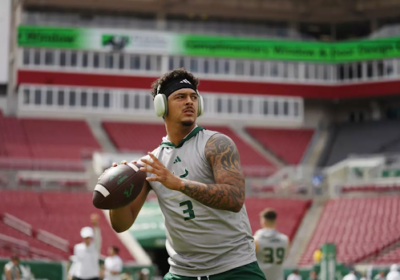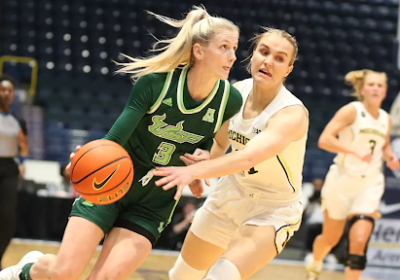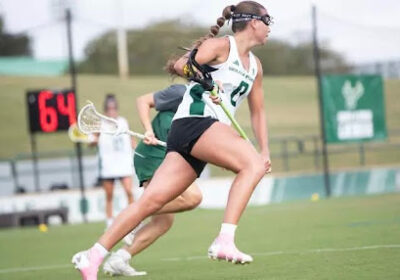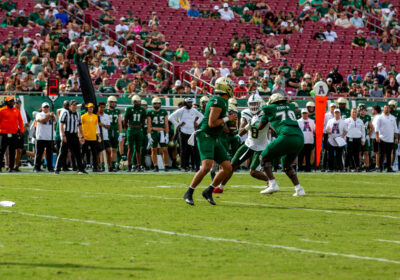College football amid coronavirus: how things will change
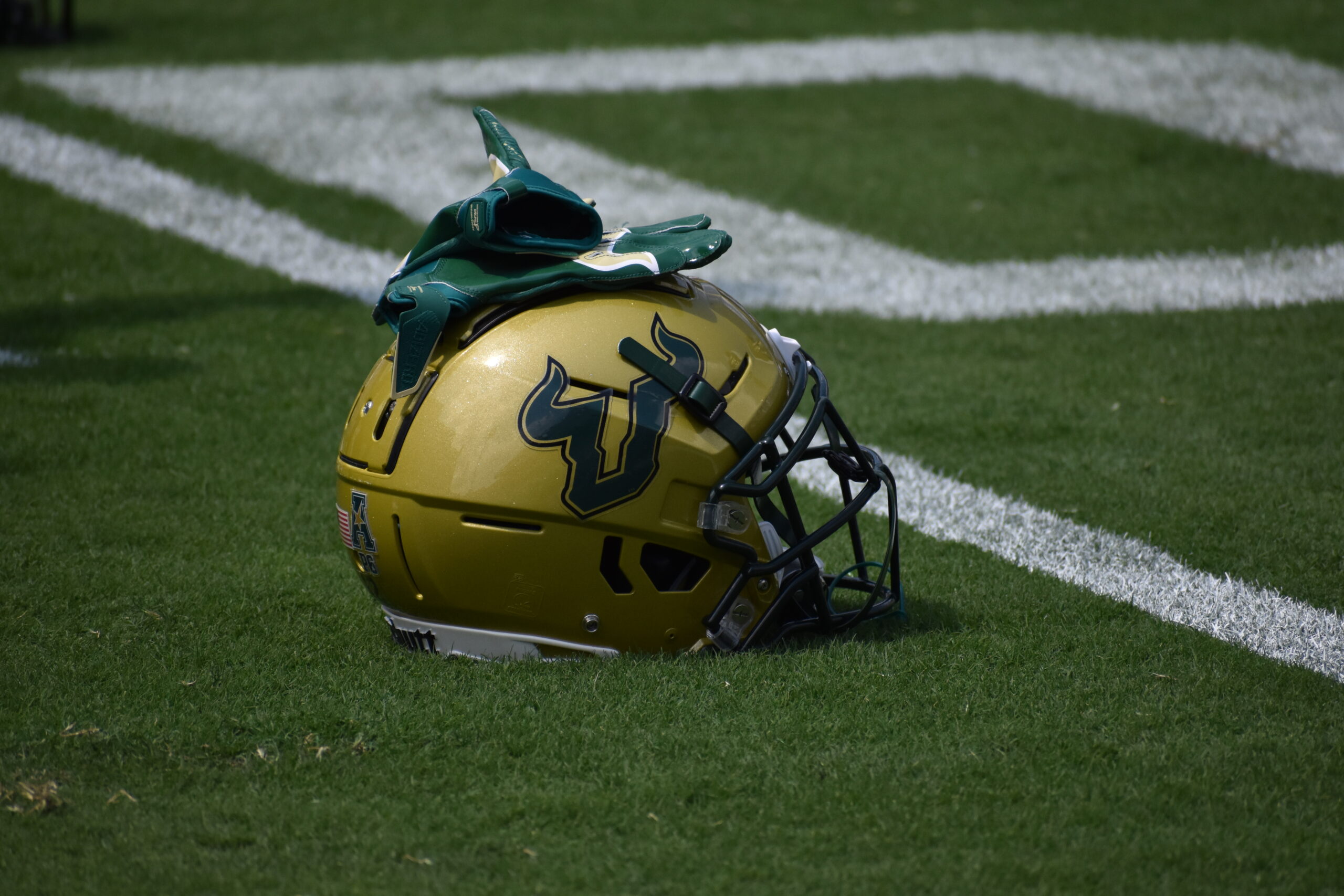
College football has been a Saturday staple for decades, and for the most part, it’s remained unchanged. The long-standing traditions, raucous student sections and tribalistic rivalries are a few reasons why college football is beloved and cherished by so many.
All of the quirks that make college football great are now luxuries of a pre-coronavirus world, and in the current state of the country, those luxuries can no longer be afforded. The novel coronavirus has undoubtedly made a resounding impact on the college football landscape.
Several major conferences have either canceled or postponed their seasons, others are planning to play without fans in attendance, and some of the biggest names in the sport are deciding to sit out. It goes without saying, this season will be unlike any other in the 150-year history of the game.
Here are a few factors that could change the outlook of college football in the near future and beyond.
Health of players, coaches and fans
Football has always been and continues to be a game of risk. Every time a player steps onto the gridiron, they risk breaking bones, tearing ligaments and sustaining multiple concussions that can lead to long-term brain damage.
This upcoming season, however, is one that comes with an unprecedented risk for all those involved, including players, coaches and fans as they are potentially exposing themselves to the novel coronavirus.
Without the safety of a bubble that has allowed the NBA, WNBA, MLS and NWSL seasons to continue without an outbreak, college football remains compromised and constantly on the brink if there is an increase in infections among players and coaches.
There have already been multiple outbreaks on college football teams, such as Clemson that saw 37 of its players test positive in June.
Considering the possible side effects of the coronavirus, contracting the disease could be even more detrimental to the athletes.
At least 10 Big Ten players who tested positive for coronavirus developed a heart condition called myocarditis, one of the virus’ known side effects, according to The Athletic.
Myocarditis is a condition that “affects your heart muscle and your heart’s electrical system, reducing your heart’s ability to pump and causing rapid or abnormal heart rhythms,” according to the Mayo Clinic. It is also advised that in mild cases, athletes should avoid competitive sports for at least three to six months.
There have been several other cases of heart damage across college football, a couple of which resulted in players opting out of the season. One such case was Houston defensive lineman Sedrick Williams, who decided to opt out after hearing of the death of Micahel Ojo, a former FSU basketball player who died of a heart attack after recovering from coronavirus.
“I’ve had my mind up for a min now, but hearing this story made it even easier,” Williams said on Ojo’s death in a statement on Facebook.
Although it is still unclear whether Ojo’s heart attack is directly related to his battle with coronavirus, “myocarditis is one of the leading causes of sport-associated sudden cardiac death in the group of athletes under 35 years of age,” according to the European Heart Journal.
The doctors advising the NCAA also realized the danger the condition poses to the athletes.
“One case of myocarditis in an athlete is too many, ” Dr. Colleen Kraft, who is on the NCAA advisory panel, said to the Chicago Tribune on Aug. 14.
Money loss
It is no secret that college football brings in the most revenue of all the intercollegiate sports. For several Power Five conferences, football makes up more than half the revenue for their respective athletic departments.
In 2018, Texas made $219 million in annual operating revenue — the most in the country — during the fiscal year, according to USA Today. Of that total revenue, $114.5 million is attributed to football, with more than $32 million consisting of ticket sales, contributions and other means of income.
“Anywhere from 75 up to almost 85 percent of all revenue to our departments are derived directly or indirectly from football,” Oregon State athletics director Scott Barnes told ESPN. “The impact of not playing a season is devastating. It would rock the foundation of intercollegiate athletics the way we know it.
“Frankly, I’m not trying to solve for that because it would be such a devastating circumstance that we’d have to get a whiteboard out and start over.”
Since that article came out in May, the Pac-12 and the Big Ten became the only Power Five conferences to postpone all fall sports, including football.
Patrick Rishe, the director of the sports business program at Washington University in St. Louis, estimated that if Power Five schools canceled the football season, then they would collectively lose more than $4 billion in revenue, approximately $62 million per school, according to ESPN.
Schools like Ohio State, Michigan and Oregon who are constantly leading the nation in total revenue brought in by their athletic departments are likely to have the resources to withstand a scenario where the football season is canceled, but Group of Five schools may not be as lucky.
Power Five schools generate about 24 percent of their revenue from media rights deals, but Group of Five schools’ media rights deals only made up 2 percent of their total revenue, according to data from Syracuse.
Smaller schools rely heavily upon a variety of other methods to bring in football revenue, such as ticket and merchandise sales, which are bound to be impacted by regulations put in place to limit stadium capacity.
The MAC was the first FBS conference to postpone all fall sports, and teams are already feeling the repercussions of that decision.
Most of the programs in the conference make the majority of their athletic revenue from university subsidies and student fees, according to USA Today.
Member schools like Central Michigan and Akron have already dropped their men’s track, men’s golf and women’s tennis programs to help with the financial fallout caused by COVID-19. Aside from subsidies, student fees and a small amount of TV revenue, MAC schools make the rest of their money from nonconference football games against Power Five opponents. This season alone, members of the MAC were set to make $10.5 million from non-league games against schools in the Big Ten.
The financial crisis that is looming over many athletic departments and conferences can change the entire structure of college football for years to come. Many of the luxurious amenities of the sport may need to be left behind for the sake of its future, according to Louisville athletics director Vince Tyra.
“I’m not saying it gives us the opportunity to hit a reset button, but I think it’s definitely going to cause people to pause as they think about what they’re doing with their capital projects, high-salary individuals. Including athletic directors, and whether your institution has proper reserves,” Tyra told ESPN.
Recruiting and the NFL Draft
Recruiting and the NFL draft have been an intrinsic part of the college football cycle for decades.
Just like the rest of college football, however, recruiting and the draft have both fallen victim to the influence of coronavirus and will be altered for the foreseeable future.
The draft has already had to make adjustments with this year’s event going completely virtual for all three days.
This year’s rendition of the draft has been further complicated by conferences postponing or canceling their season and multiple high-profile college players electing to opt out and prepare for the NFL instead.
On July 26, Pro Football Network’s draft analyst Dalton Miller released his mock draft for the 2021 draft class, and of the players that he is projecting to be selected in the first round, 18 will not be playing this fall. The big names within that group include Ohio State quarterback Justin Fields, Oregon offensive tackle Penei Sewel, Penn State linebacker Micah Parsons and LSU wide receiver Ja’Marr Chase.
Along with the draft, the combine, Senior Bowl and pro days will also feel the effects of coronavirus, making the evaluation process even more difficult.
“Now you’re in a situation where you don’t have any contact with these college kids and you haven’t seen them,” NFL Network analyst Daniel Jeremiah said. “You don’t know what they look like or how they move.”
On the other end of the spectrum, college recruiters, and the recruits themselves, are facing their own set of problems.
Relationships are the foundation on which recruiting is built, and in a COVID-19 world, forming bonds with recruits has become more important and more arduous than ever.
Without the luxuries of on-campus and in-home visits, coaches have remained committed to forming relationships with their recruits by interacting via a variety of virtual channels.
“The actual contact has not stopped,” Rob Harris, coach of Archbishop Carroll High School in Washington D.C., said to NBC Sports Washington. “The engagement through social media is prevalent. The engagement through phone call and text is up. They’ve [college coaches] still been reaching out.
“It’s not as close contact as we may want or that we’re used to, but everybody is just making the adjustment based on the situation.”

